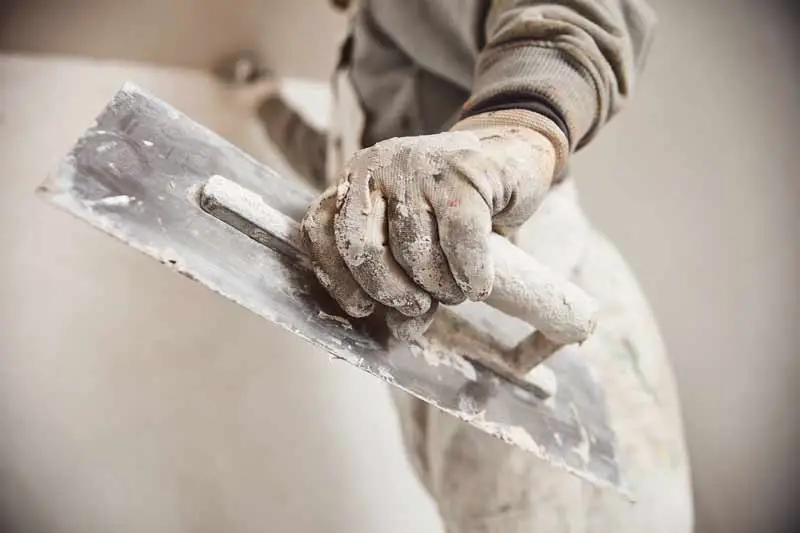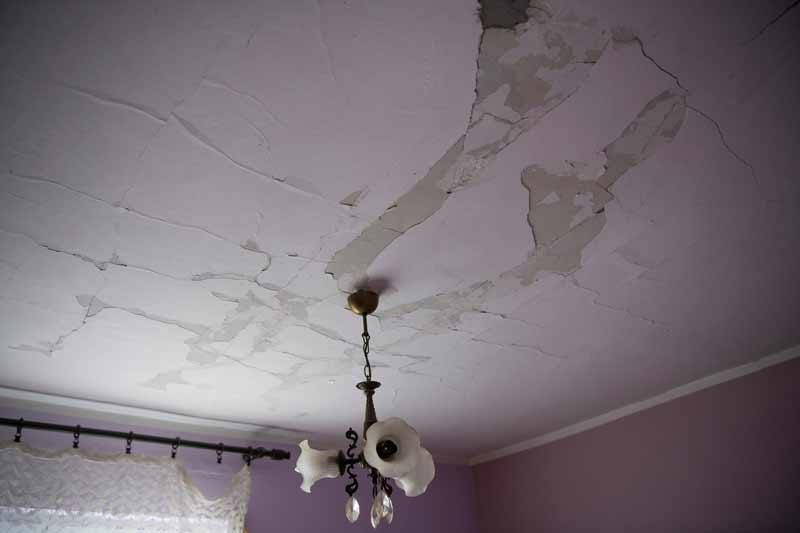
It can be difficult to know what building materials can and can’t be used in combination with lime plasters. There’s a lot of conflicting information on the topic of gypsum and lime plaster. People commonly ask whether you can apply gypsum over lime plaster.
You should never skim over lime plaster with gypsum plaster. Gypsum is not a breathable building material like lime. This will cause many issues relating to trapped water. Commonly, when lime has been skimmed over with non-breathable materials, water gets trapped and will damage the gypsum skim. Eventually, this can cause the skim coat to crack and delaminate from the wall, putting you back at square one.
Let’s go a bit more into detail about where you should and shouldn’t use gypsum plaster.
The Main Reasons Gypsum Shouldn’t be Applied Over Lime
Lime plaster is a breathable building material. It was commonly used in older historical buildings (mostly built before WW2) and is currently used to restore these buildings. Breathable building materials are important for these older buildings as they aren’t as watertight and move about more on their foundations than modern buildings. This is why it’s important to use building materials like lime plaster and mortar to help absorb and disperse any water that has made it into the building, protecting it from water damage and mould growth.
Old buildings must be restored or repaired with similar building materials to the ones that were originally used. Skimming over a lime plaster with non-breathable skims like gypsum can have severe negative consequences on the building. The lime plaster below the skim can still absorb water from the wall, but this water cannot evaporate away because of the gypsum and therefore becomes trapped.
Related article: Should Lime Plaster or Render be Sealed?
Trapped water that sits below gypsum or cement plaster will eventually force the skim coat off the wall and any other non-breathable materials applied with it. It is common to see gypsum plaster falling off the walls of old buildings. In the 1920s onwards, many old buildings were ‘restored’ using non-breathable building materials. These buildings have suffered the consequences. Mould growth, damp patches, unpleasant smells, damaged stone and brickwork, and issues with rotting timber.
If the gypsum skim coat does not fall off or crack up, it could still be trapping water. The trapped water could instead be causing damage to the actual masonry and structural integrity of the building. Trapped water can cause the following damage to buildings:
- Rotting, swelling or a general breakdown of any wooden materials.
- Damage and loss of structural integrity of bricks and masonry due to frost-thaw cycles of damp materials.
- Corrosion of metal building materials.
- Flaking paint, varnish or other finishing material.
- Mould and bacterial damage due to sustained moisture.
- Pest damage by moisture-loving insects such as cockroaches and rodents.

Is it Okay to Use Gypsum Plaster on Internal Walls And Ceilings?
Many people say as long as the outside wall has breathable building materials you’ll be okay. This is false. If you own an older home even internally skimming over plaster can cause issues. Issues with condensation and high humidity can cause extensive mould growth in this scenario. This is because the water cannot escape through the plaster, and we humans tend to humidify internal environments via breathing and sweating.
Now of course you can internally plaster your home, and you may find you have zero issues. Sometimes you can get lucky, but more often than not issues will crop up and the money spent fixing them is far more than if you’d just replastered with lime.
Can You Patch Lime Plaster With Gypsum Plaster?
If you have a small area of damaged lime plaster it’s common to think it’s acceptable to repair using gypsum plaster. Whilst this practice is certainly much better than skimming the entire wall and covering the lime plaster, it can still lead to issues if dampness is present. If there are only small patches to do it is just as easy to purchase a pre-mixed lime plaster skim and apply it yourself.
Related article: Does Lime Plaster Help To Prevent Damp?
If the area in question has no damp issues and has had none in the past, then patching in with gypsum plaster is acceptable. You could even add a small amount of gypsum to a pre-mixed lime plaster to help improve set times.
Can You Add Gypsum to Lime Plaster?
This really depends on the particular circumstances of the house in question. If it’s an old house and needs to be completely re-skimmed or plastered then I would not recommend gauging the lime plaster with gypsum. Whilst this can be a slow and sometimes fairly expensive process, once properly repaired, the new plaster would likely last for centuries. Most plaster in old houses is often centuries old and that’s why it’s in need of some TLC itself.
If you need to re-skim the odd wall or ceiling it may be acceptable to add a small proportion of gypsum plaster to help speed up set times. If gypsum is added to lime plaster please note that it would reduce flexibility and breathability. A better alternative would be to add a small amount of NHL 2. This will provide a small hydraulic set to help improve curing times.
Can You Use Lime Plaster on Gypsum or Plasterboard?
Lime plaster requires a good ‘mechanical key’ to adhere to a wall or ceiling. A mechanical key basically means the plaster needs something to hold onto, such as a nice rough surface or laths. This is in complete contrast to the chemical key of gypsum and cement. So what does this really mean?
Related article: What Are The Best Paints For Lime Plaster?
Lime plaster, mortar and render will not adhere well to smooth or dense backgrounds. This makes lime plaster unsuitable for plastering over plasterboard or gypsum plaster. However, if you create a key it may be possible. A key can be created by scoring and indenting the surface heavily, thereby creating something for the lime plaster to ‘hold’ onto. Very smooth surfaces can be hacked back and treated with a bonding agent such as PVA or SBR. After which a coarse slurry like lime mortar can be thrown at the wall and left to thoroughly dry, creating the necessary key for the following plaster.

